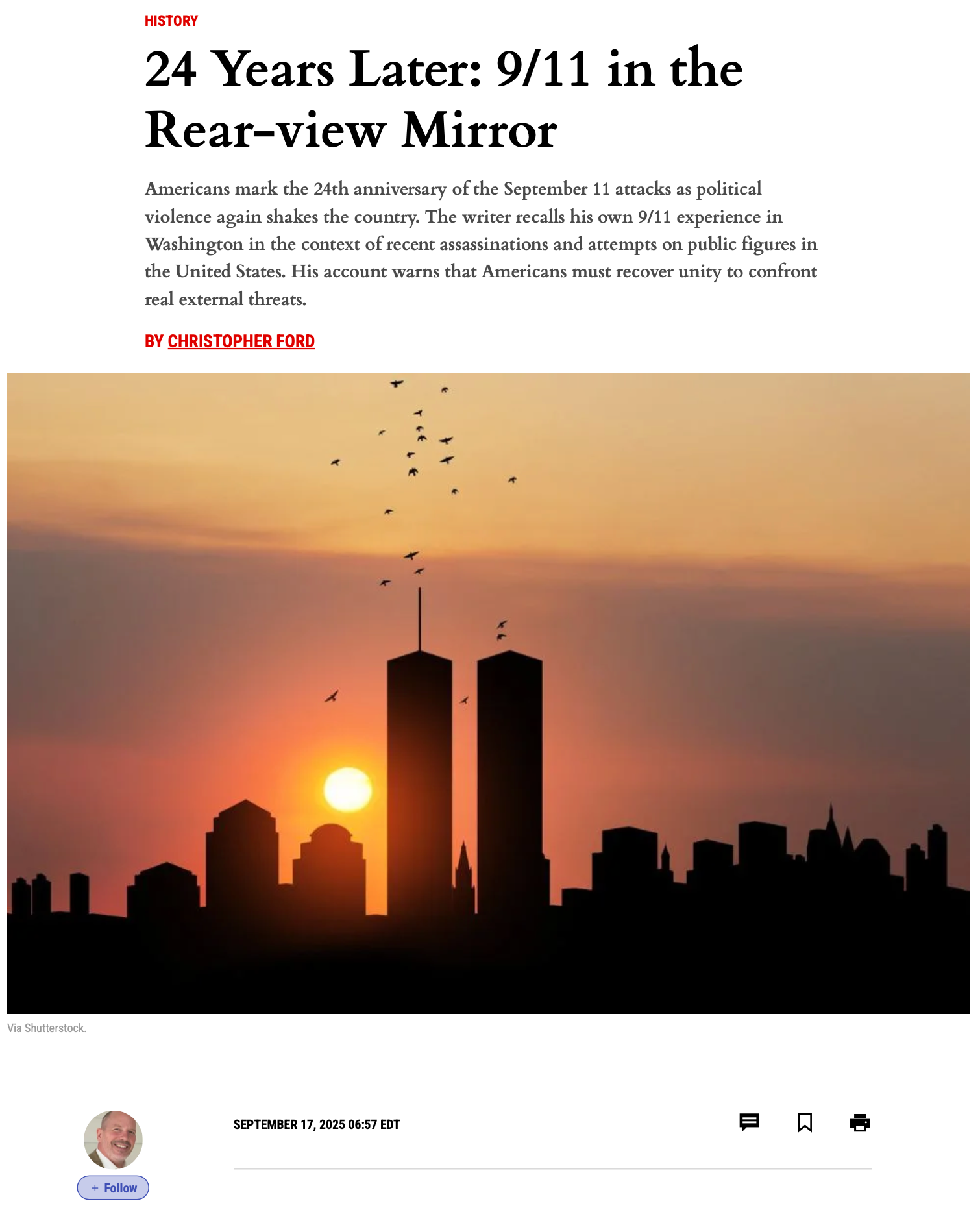Critiquing the “Irreversibility” of Nuclear Disarmament
Below is an edited and revised version of the remarks Dr. Ford prepared for a CSIS/PONI Workshop on “Irreversibility in Nuclear Disarmament” at Wilton Park, in the United Kingdom, on December 18, 2024.
Thank you for asking me to offer some thoughts on the idea of “irreversibility” in nuclear disarmament. I offer these comments purely as my own opinion, and I fear my thoughts may not be exactly what this group will want to hear, but I’m nonetheless grateful for the opportunity to provide.
The Challenge of “Irreversibility”
You might say that we’ve struggled with the idea of whether or not to make disarmament “irreversible” for thousands of years. Famously, the ancient Israeli prophet Isaiah seems to have had a vision of some kind of “irreversibility” in mind:
“And he shall judge among the nations, and shall rebuke many people: and they shall beat their swords into plowshares, and their spears into pruninghooks: nation shall not lift up sword against nation, neither shall they learn war any more.” [Isaiah 2:1]
Yet his pronouncements about this also need to be set against the less well-known words of the prophet Joel, who took somewhat a different view:
“Beat your plowshares into swords, and your pruninghooks into spears: let the weak say, I am strong.” [Joel 3:10]
Rather more recently, a more Isaiahan notion of “irreversibility” seems in some quarters to have acquired an all but totemic importance in the nuclear disarmament community. It was, of course, the fifth listed of the infamous 13 “practical steps for the systematic and progressive efforts [sic] to implement article VI of the Treaty on the Non-Proliferation of Nuclear Weapons” (NPT) called for in the Final Document adopted by the 2000 NPT Conference (RevCon). That document made clear its drafters’ view that “[t]he principle of irreversibility” should “apply to nuclear disarmament, nuclear and other related arms control and reduction measures.”
These policy recommendations from the year 2000 were endorsed anew by the NPT RevCon in 2010, which “reaffirm[ed] the continued validity of the practical steps agreed to in the Final Document of the 2000 Review Conference.” Indeed, the 2010 document articulated a rather ponderous 64-point “Action Plan” for disarmament, under which all parties committed to applying the principle of irreversibility to their treaty negotiations. Many countries at that 2010 meeting, moreover, declared irreversibility to be “a fundamental principle for nuclear disarmament,” and the idea has also been endorsed by the United Nations General Assembly.
The fact that the aforementioned 13 “Practical Steps” toward which the disarmament community still continues to genuflect also include full implementation of the START II arms control agreement, conclusion of START III, strengthening the Anti-Ballistic Missile Treaty, and implementation of the Trilateral Initiative between the United States, Russia, and the International Atomic Energy Agency (IAEA) – all efforts that collapsed or were abandoned decades ago, and indeed well before they were, remarkably, reaffirmed as objectives in 2010 – may tell you what you need to know about the intellectual seriousness of such politically-driven and committee-drafted documents. Yet irreversibility, at least as a concept, apparently still continues to carry great weight.
“Irreversibility” … Isn’t
I hope you won’t take it wrong, however, if I channel my inner Prophet Joel and say that I think “irreversibility” quite problematic. To begin with, I dislike it as a term because it seems dishonest. In the strong sense, after all, “irreversibility” is simply a fiction. A Wilton Park report observed in 2022 that the only way to achieve irreversibility of nuclear disarmament would be somehow to completely eliminate all existing fissile materials and abandon nuclear fission, but even that assessment seems overly generous. As I noted in an event at the Wilson Center last week,
“If nuclear weapons can be built entirely from scratch once, they can be built from scratch again – and it would be vastly easier that second time because everyone now knows this is possible and many understand at least the basics of how to do it.”
To be sure, there might be many analytically interesting questions surrounding how desirable continued disarmament could be made to feel, how difficult it would be for a country to rearm, how long rearmament would take, and how expensive such reconstitution would be. Yet these are all matters of degree, and irreversibility – on its face – seems fundamentally hostile to “it depends” answers.
Since you can’t ever really have irreversible disarmament, it seems – to be charitable – at least confusing to insist upon it as a priority. “Ought,” after all, implies “can,” and it is not morally compelling to demand the achievement of an impossible objective. As perhaps with the challenge of avoiding sin, if one accepts that “never rearming” is indeed desirable, the game is surely more wisely and sustainably played if you have the honesty, self-awareness, and moral courage to admit that perfection isn’t really an option.
In Praise of “Reversibility”
But my dislike of “irreversibility” goes deeper than just overweening syntactical ambition. More fundamentally, I’m not entirely persuaded that irreversible disarmament is actually a per se good in the first place.
The acquisition of nuclear weapons, after all, does not simply occur by accident; rather, the question of armament arises in response to perceived need. Nor is such need necessarily an illegitimate or unworthy one. As even the International Court of Justice rather grudgingly acknowledged in its advisory opinion of 1996, the threat or even the use of nuclear weapons may be permissible “in an extreme circumstance of self-defence, in which the very survival of a State would be at stake.”
In a context in which possession of nuclear weaponry is needed to deter such aggression, the very idea of nuclear disarmament loses moral force, and surely in no case more so than where such disarmament becomes “irreversible.” Nobly forswearing the option of re-arming where there remains the possibility of facing existential threats that cannot feasibly be countered by any other means would seem a sort of madness. Nuclear disarmament is supposed to be a good thing because it conduces to greater safety and security for all, but if in fact it amounts to a suicide pact in the face of geopolitical predation, it is surely neither a good idea nor a morally compelling objective. Hence my deeper problem with irreversibility as a canonical objective for the disarmament movement.
Indeed, preserving the ability to reverse disarmament has already contributed in important ways both to achieving disarmament and to preserving deterrence. As the United States began rapidly drawing down the size of its nuclear arsenal and dismantling thousands of weapons after the end of the Cold War, for instance, it deliberately maintained a modest reserve stockpile of devices that had been removed from service but that were not dismantled. These out-of-service weapons were kept in storage as a sort of insurance policy in case the security situation suddenly deteriorated again. (As Defense Secretary Bill Perry described it in 1994, the idea was to “balance … showing U.S. leadership in responding to the changed international environment and hedging against an uncertain future.”) Without the degree of reversibility represented by the option of uploading delivery systems once again from that reserve stockpile if needed in response to unforeseen future threats, the United States surely would have drawn down its deployed arsenal much more slowly, and might have had to stop its dramatic post-Cold War reductions much sooner.
More recently, American officials have also emphasized the role that the U.S. nuclear weapons production infrastructure can play in supporting deterrence if we can use our capacity to produce new weapons if needed to signal to our adversaries that it is not in their interest to have an arms race with us. Even if it is not used, in other words, the capacity to build more can contribute to deterrence.
By the same token, lacking the capacity to build more – that is, irreversibility – can invite trouble. It may be, in fact, that we are today seeing how a high degree of irreversibility can encourage adversaries to build up their nuclear arsenals and rely more heavily upon nuclear coercion. The United States deliberately reduced the size of its nuclear weapons infrastructure after the end of the Cold War to such an extent that this infrastructure is today sized only for maintaining the status quo of our current arsenal and cannot presently support any effort to produce significant numbers of additional weapons.
Thankfully, the last two U.S. administrations have started to turn this around, but reinvigorating our nuclear weapons infrastructure is difficult, slow, and expensive – and our adversaries are well aware of this. I fear that he degree of irreversibility inherent in our having emasculated our weapons infrastructure in the post-Cold War era can hardly but be contributing to the current eagerness of Russia and China today to confront us with dangerous nuclear weapons build-ups, with which they know we will struggle to compete. So from that perspective, I’d say reversibility has a lot to be said for it.
Ironically, in fact, some have even championed the idea of being able to reverse disarmament as a way to help achieve a world without nuclear weapons. In 1946, for instance, the Acheson-Lilienthal Report proposed an approach to stabilizing a disarmed world in part through ensuring that any one state’s seizure of internationally-controlled nuclear technology or materials could be countered by similar seizures by other states – thus making a form of nuclear deterrence based upon the assured general reversibility of disarmament into a necessary architectural element of its plan. Jonathan Schell’s 1984 book The Abolition also relied upon such “weaponless deterrence,” the centerpiece of which was having each of the former nuclear weapons possessors retain the ability to reconstitute its arsenal if any other one did. I have myself critiqued this approach to trying to stabilize a world of “Zero” as likely being unworkable – as also, more importantly, has Thomas Schelling – but my point here is that even portions of the disarmament community have (at least impliedly) found “irreversibility” counterproductive.
Far from irreversibility being a per se good, therefore, a degree of reversibility in nuclear disarmament can actually be stabilizing, by contributing to deterrence, strategic stability, and the avoidance of arms races. By tilting at the windmill of “irreversibility,” therefore, the disarmament community may actually be discouraging nuclear weapons possessors from thinking more seriously about disarmament possibilities.
From these insights, I would argue that any effort to do something constructive with the wrongheadedness embedded in the “irreversibility” portions of the 2000 RevCon Final Document and the 2010 “Action Plan” will need to start with figuring out how to discern when and to what degree irreversibility is good, and when and to what degree it isn’t. (Depending upon the circumstances, it could be either one.) This would require a taste for nuance and complexity that the drafters of NPT documents are unaccustomed to providing, but perhaps it will be possible.
The Challenge of Geopolitics
Adding to the difficulty, I would also think that the few historical examples we’ve already seen of reasonably durable nuclear disarmament suggest that the biggest challenge in making things “irreversible” will relate not to drafting clever treaty provisions and creative verification protocols – which is what so many of us nuclear nerds like to do – but rather to messy questions of politics and geopolitics.
Argentina and Brazil, for instance, seem to have done a pretty impressive job in accomplishing exactly what the Preamble to the NPT makes clear that we really need to do “in order to facilitate” disarmament – namely, ease international tension and strengthen trust between states. Yet this salutary journey wasn’t just about ending their embryonic nuclear weapons programs and then setting up the Argentina-Brazil Agency for Accounting and Control of Nuclear Materials (ABACC). Crucially, it also required much bigger, antecedent muscle movements, as both of those countries ousted their prior military dictatorships and democratized in the 1980s.
South Africa moved even farther on its own, dismantling a small arsenal of existing nuclear weapons. This too, however, occurred in the context of regime change – the transition from the apartheid-era National Party government to universal suffrage and the election of the ANC – as well as the evaporation of the regional Communist threat that had preoccupied ancien régime security planners in the White minority government there for decades. For their parts, Ukraine, Belarus, and Kazakhstan joined the NPT and relinquished the nuclear weapons that had been stranded on their soil by the collapse of the USSR, but these countries did so in circumstances in which they lacked any ability to maintain or effectively use such devices anyway, and on the strength of international reassurances given that purported to guarantee their security and territorial integrity at a time in which their former imperial overlord had just utterly imploded.
Ukraine, at least, might be forgiven for some ambivalence about that move today, of course. My point, however, is that it seems to take quite major political and geopolitical shifts in order for nuclear-related disarmament to become possible at all – much less for it to be so in ways that seem more or less “irreversible.”
And that’s the rub. If theorists and advocates for irreversible global nuclear disarmament under the “Thirteen Steps” and the 2010 “Action Plan” are to be taken seriously, their agenda needs to start very, very far “upstream” of the bare fact of nuclear weapons possession. First and foremost, that agenda must involve figuring out how to heal the world’s myriad divisions, rivalries, antagonisms, and existential fears enough that all the formerly oppositional nations of the planet will look upon each other as placidly as one imagines and hopes Brazilians and Argentines do today.
That’s one hell of a tall order, I’m afraid. And, though I dearly wish the “irreversibility of disarmament” crowd were focused upon at least trying to answer this geopolitical mail, I’m not holding my breath.
— Christopher Ford







